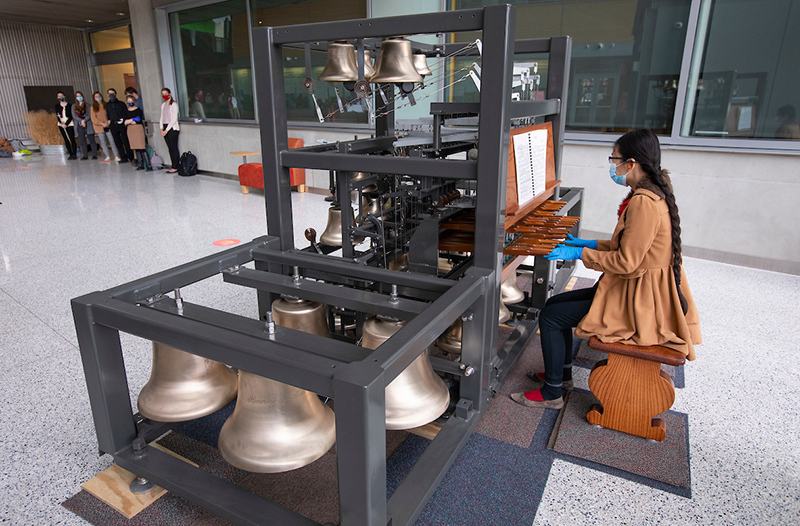A grant of nearly $550,000 will allow Iowa State to recoup some pandemic-related expenses specifically related to IT access and connectivity. The grant from the Iowa Department of Education is based on Iowa State's number of federal Pell Grant-eligible students. Last month, the department distributed about $4.4 million among Iowa's public and private colleges and universities and community colleges according to this metric. This funding is part of the federal coronavirus aid bill (CARES), coming via the $3 billion Governor's Emergency Education Relief (GEER) Fund.
Professional development grant
A second GEER fund, totaling $1.5 million, will be distributed among Iowa colleges and universities as competitive grants for professional development in support of online instruction. Grant proposals are due Dec. 11.
Associate vice president for institutional financial strategy Bonnie Whalen is coordinating the large task of assembling records for more than $20 million in many kinds of pandemic-related costs and processing paperwork for reimbursement from GEER funds, the Federal Emergency Management Agency (FEMA) and spring CARES funding for institutional expenses.
"Our goal is to use the appropriate funding sources to recoup as much of our investment in this response as possible and reduce the COVID impact on the university's operating budget," she said. "Each source has specific criteria and limitations we need to follow."
For example, the GEER funds could cover IT initiatives such as laptop purchases for the student loaner program, central campus and stadium drive-up Wi-Fi zones, or software licenses and classroom technology upgrades that support virtual teaching. There's not enough GEER funding to cover all that, she acknowledged. IT projects are not eligible for FEMA reimbursement.
The first step Whalen said, is to maximize eligible FEMA reimbursements. Knowing what FEMA accepts and rejects will influence how Iowa State uses other funding sources. She said her initial focus has been on large university initiatives that serve many such as face coverings, hand sanitizer dispensers, additional custodial teams and the Cyclones Care campaign.
FEMA normally will reimburse 75% of the cost of an emergency-related project. She anticipates a response from FEMA by the end of December on the university's initial requests.
The spring CARES funding has broader eligibility criteria. Examples of allowable expenses include IT projects and housing and dining refunds to students.
The university will continue to track expenses that could be eligible for FEMA reimbursement, but Whalen said it's now a smaller group of projects. Effective Sept. 15, FEMA is supporting expenses that remain a direct response to the COVID-19 disaster -- for example, testing, quarantine and isolation costs -- but not expenses incurred because the university opted to be an open campus this fall. Preventative measures since Sept. 15, for example, hand sanitizer stations, may not be reimbursable.

